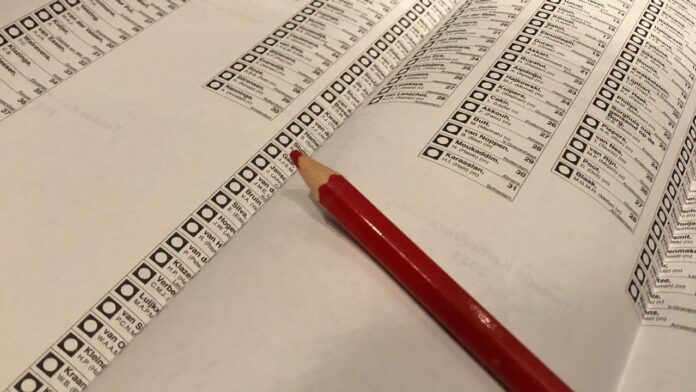Whether you go vote in Eindhoven depends mainly on where you live. In Doornakkers, not even one in five residents voted in the last municipal elections. In De Laak many people went to the polling station. The difference in turnout between these two neighborhoods: as much as 40%.
Going to the polling booth is not popular in Eindhoven. In the previous municipal elections in 2018, only 46 percent of eligible voters voted. The national average is 55%. If it is better this time, remains to be seen.
For years, the municipality has been trying to entice its residents to fill out the ballot. This year, social media campaigns and mobile ballot boxes, among others, should lead to a higher turnout. But what matters most is the neighborhood where people live.
High turnout
The De Laak district near the city center, for example, stands way above other Eindhoven districts. During the municipal elections in 2018, 57.5% of the inhabitants went to vote here, even slightly more than the national average. That’s about three thousand people. In the Rosebud neighborhood, the turnout was 52%. This district, like De Laak, lies near the center. Here is a relatively young and highly educated population with an above-average income. In De Laak and Rozenknopje live on average 40 to 50% of highly educated people.
Low turnout
This is in stark contrast to the 18% turnout in Dommelbeemd, a district with some 13 thousand residents in northeastern Woensel. Only about 2,300 people went to vote there. Relatively more elderly people and people with a low or medium level of education live in Dommelbeemd. In the Doornakkers district in Tongelre, the same picture holds true: not even one in five residents entitled to vote bothered to go to the polling station.
The educational level determines turnout
Data from Buurtkijker Eindhoven show that the turnout during elections is related to the level of education in a district. This is actually the case everywhere in the Netherlands. “The more educated you are, the more often you will vote,” says Mariken van der Velden, who grew up in Eindhoven and is now a political scientist at VU University Amsterdam. In general, highly educated people are more interested in politics than less educated people. They also feel better represented by politicians.
In Eindhoven, income inequality also seems to influence turnout. According to Van der Velden, this is also related to education level. “In neighborhoods where many higher educated people live, income inequality is often high. Since the highly educated go to the polls the most, it is, therefore, the level of education that is the deciding factor, and not income inequality.”
It could also be that residents who are confronted with income inequality on a daily basis feel more of a need to change something than residents who are less exposed to it. Van der Velden thinks this could possibly play a small role. Maybe people in neighborhoods with a lot of income inequality are more motivated to vote.
It is not known whether the municipality is taking the turnout differences between neighborhoods into account with its campaign.
Source: www.studio040.nl
Translation: Chaitali Sengupta. She also gives online INBURGERING classes.















